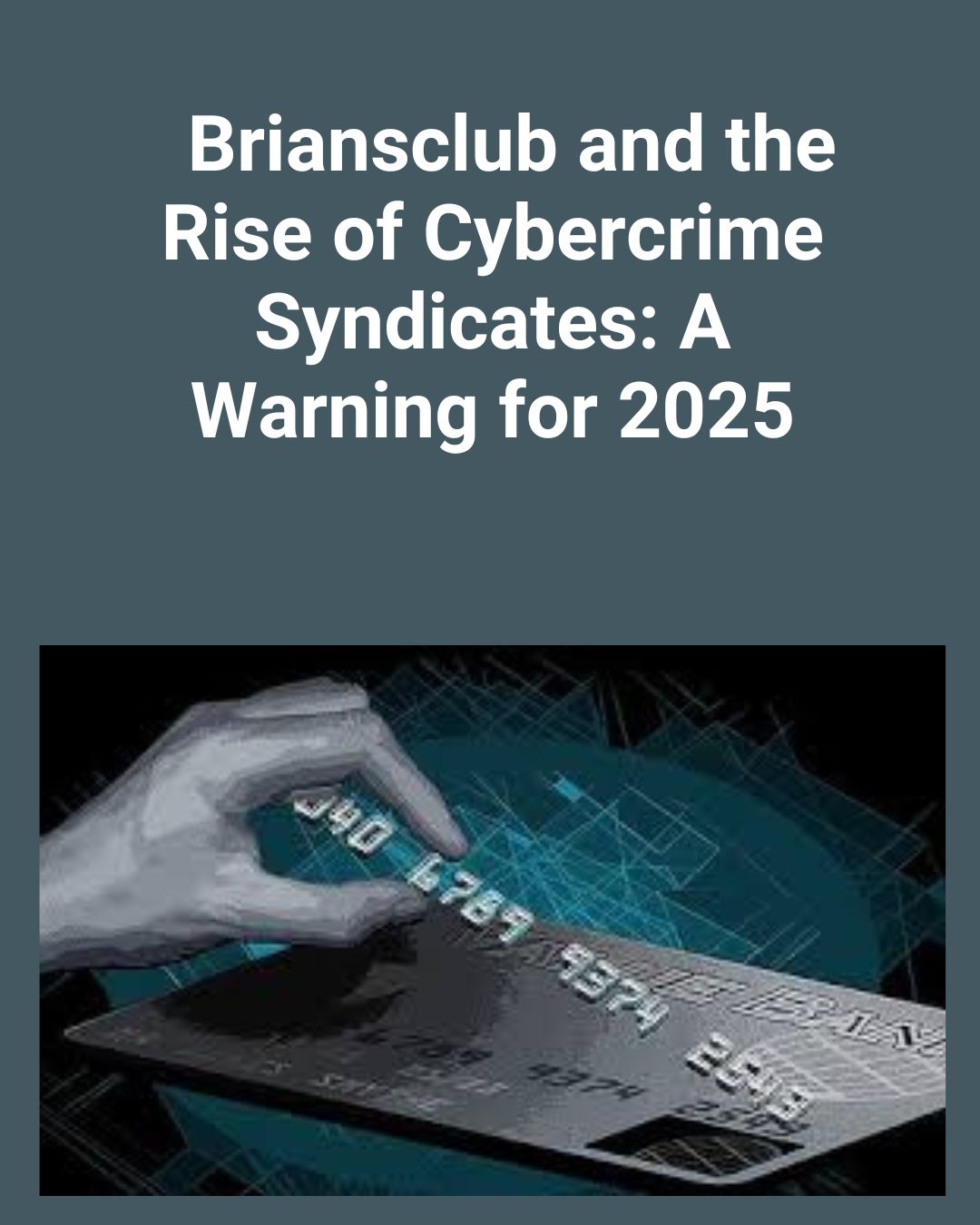Introduction: A Name That Echoes Across the Dark Web
When the name Briansclub first surfaced, it sent shockwaves through the cybersecurity world. It wasn’t just another dark web store—it was a highly structured, global criminal operation, dealing in millions of stolen credit and debit card records. Even after being exposed and shut down, the influence of Briansclub hasn’t faded. In 2025, it stands as a stark reminder of how fast and far-reaching cybercrime has become.
This article explores Briansclub’s history, how it shaped modern cybercrime, and what steps individuals and organizations must take to protect themselves from its lasting effects.
The Story Behind Briansclub: Not Just a Marketplace
At its peak, Briansclub was a one-stop shop for stolen financial data. Hosted on the dark web, it provided users with
-
Updated dumps of stolen credit card info
-
Advanced filtering to find high-value data
-
A reputation-based rating system for sellers
-
Secure crypto payments for anonymity
Estimates suggest that over 26 million card details passed through the platform, making it one of the largest carding sites in history. The name was ironically (and falsely) designed to imitate respected cybersecurity journalist Brian Krebs, whose investigations exposed its operations.
The marketplace was eventually taken down in 2019, but not before it sparked a surge in copycat platforms and inspired a wave of digital black markets operating with increased sophistication.
What Makes Briansclub So Dangerous—Even Today?
Even though Briansclub was dismantled, its code, structure, and strategy live on. Several dark web marketplaces now mimic its model, improving upon it with:
-
Decentralized hosting to avoid seizure
-
AI-driven fraud systems to auto-test stolen cards
-
Subscription access to monthly data dumps
-
Dark web customer support via encrypted messaging platforms
What’s alarming is that the barriers to entry have dropped—anyone with basic knowledge of crypto and a Tor browser can access stolen data markets today.
2025: A Surge in Data Breaches and Online Vulnerabilities
Cybercrime has evolved significantly in recent years. The following trends have created a favorable environment for the next generation of Briansclub-style marketplaces:
-
More digital payments = more data to steal
-
Increased remote work = more weak endpoints
-
Poor password hygiene = easy entry points
-
AI-powered phishing = personalized, believable scams
-
Global economic instability = more cybercriminal recruitment
In short, the same conditions that allowed Briansclub to thrive now exist on a larger, more dangerous scale.
How These Markets Operate in 2025
Today’s dark web markets have grown more secure, harder to detect, and more profitable. Here’s how they typically function:
-
Stolen data (cards, logins, SSNs) is collected via malware, phishing, or breaches
-
Hackers upload dumps to the marketplace
-
Buyers search and filter data by country, card issuer, and expiration date
-
Payment is made via Monero or Bitcoin, and delivery is immediate
-
Vendors build trust through ratings and feedback, just like legal e-commerce sites
This underground economy is thriving, with hundreds of anonymous transactions daily, many tied back to Briansclub’s original framework.
The Cost to Businesses and Individuals
For Businesses:
-
Data breach costs average $4.45 million (according to IBM 2023 report)
-
Reputation loss that can affect brand trust for years
-
Fines under GDPR/CCPA for not protecting user data
-
Operational disruption from ransomware or downtime
For Consumers:
-
Identity theft used to apply for loans or credit
-
Account takeovers on banks, emails, or mobile apps
-
Unauthorized transactions that go unnoticed for months
-
Mental stress and long recovery processes
Cybercrime has a real-world cost, and platforms like Briansclub have enabled those consequences to scale.
Cybersecurity Tips to Stay Protected
For Individuals:
-
Don’t reuse passwords. Use a password manager.
-
Enable multi-factor authentication (MFA) everywhere.
-
Don’t click links in suspicious emails or texts.
-
Use virtual credit cards for online purchases.
-
Monitor your bank statements and credit reports monthly.
For Businesses:
-
Regularly update systems and patch vulnerabilities.
-
Train employees on social engineering and phishing risks.
-
Invest in threat detection and response software.
-
Enforce least-privilege access and role-based permissions.
-
Use endpoint protection for all devices accessing your network.
Prevention is far cheaper than recovery.
What to Do If You’re a Victim
If you suspect your data has been compromised on a dark web platform:
-
Immediately freeze your credit and bank cards
-
File a report with your local cybercrime unit
-
Use identity theft protection services
-
Reset all logins and security questions
-
Consider legal counsel if your business is impacted
Early detection and response can significantly reduce the damage.
Conclusion: A Lesson for the Future
Briansclub is more than a historical cybercrime event—it’s a symbol of how efficient, scalable, and organized modern digital crime has become. As we continue to digitize every aspect of our lives in 2025, we must also upgrade our awareness and defenses.
Whether you’re a business leader, a student, or an everyday online shopper, understanding how platforms like Briansclub operate is your first line of defense. The dark web isn’t going away—but your proactive steps can keep you one step ahead.









